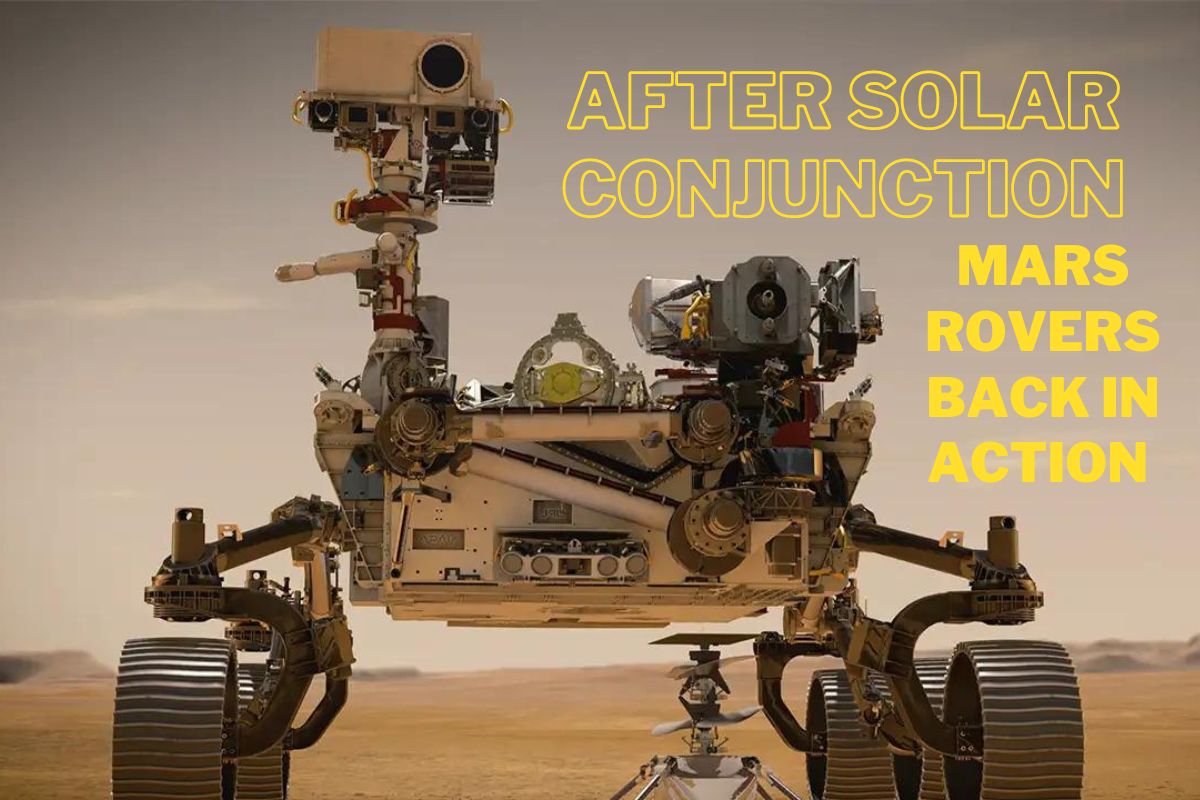After completing the period of Solar conjunction, all NASA’s rovers are back in full action for doing science experiment. Generally Solar conjunction occurs when a planet or other Solar System object is on the opposite side of the Sun from the Earth. Solar conjunction occurs every 2 years.
NASA didn’t send any commands to its Mars rovers a period when the Red Planet Mars was on the other side of the sun from Earth’s perspective from Nov. 10 through Nov. 25.
In the course of these celestial alignments, denoted as Mars solar conjunctions, plasma expelled from the sun’s outermost layer can disrupt communications between the two planets. Consequently, NASA, along with other entities overseeing Red Planet rover operations, temporarily ceases the transmission of commands during these occurrences, transpiring approximately biennially. This precautionary measure aims to avert the inadvertent passage of corrupted commands that might lead to operational complications.
Now that conjunction is over, I’m excited to continue #SamplingMars! You’ll start to see more blogs from my team and the latest images from me: https://t.co/7w3rbvtHCT pic.twitter.com/Rj7yXx3fjs
— NASA's Perseverance Mars Rover (@NASAPersevere) December 4, 2023
Perseverance touched down within the confines of the Red Planet’s Jezero Crater in February 2021. Since then, its primary objectives have encompassed the search for traces of ancient Martian life and, as the aforementioned post suggests, the collection of specimens earmarked for eventual conveyance back to Earth.
Alongside Perseverance on its interplanetary sojourn is Ingenuity, a compact 4-pound (1.8 kilograms) helicopter assigned the mission of demonstrating the feasibility of aerial exploration on Mars. Ingenuity accomplished this feat over the span of five flights during the spring of 2021 and has since prolonged its mission, assuming the role of a reconnaissance asset for Perseverance.
Ingenuity wasted no time recommencing its activities following the cessation of the conjunction.
“Triumph! Over the weekend, Ingenuity concluded its 67th flight, covering a distance of 393 meters (1,289 feet) in excess of two minutes. The #MarsHelicopter has repositioned itself in preparation for subsequent flights,” relayed officials from NASA’s Jet Propulsion Laboratory in southern California, the institution managing Ingenuity’s mission, via X on Monday.
Success!
— NASA JPL (@NASAJPL) December 4, 2023
Ingenuity completed Flight 67 over the weekend, flying 393 meters for more than two minutes. The #MarsHelicopter repositioned itself to get ready for future flights. https://t.co/1CXIWdYIAQ pic.twitter.com/EssZi3LEEF
Perseverance and Ingenuity constitute just a fraction of the active robotic contingent dispatched by NASA to Mars. The Curiosity rover has been traversing the terrain of the Red Planet’s Gale Crater since August 2012. Additionally, three NASA probes, namely Odyssey, the Mars Reconnaissance Orbiter, and MAVEN (abbreviated for “Mars Atmosphere and Volatile Evolution”), are diligently studying Mars from orbit.
Beyond NASA’s endeavors, other orbiters are also deeply engrossed in scrutinizing Mars. Notable contributions hail from the European Space Agency’s Mars Express and, the United Arab Emirates’ Hope probe, and Tianwen-1.
